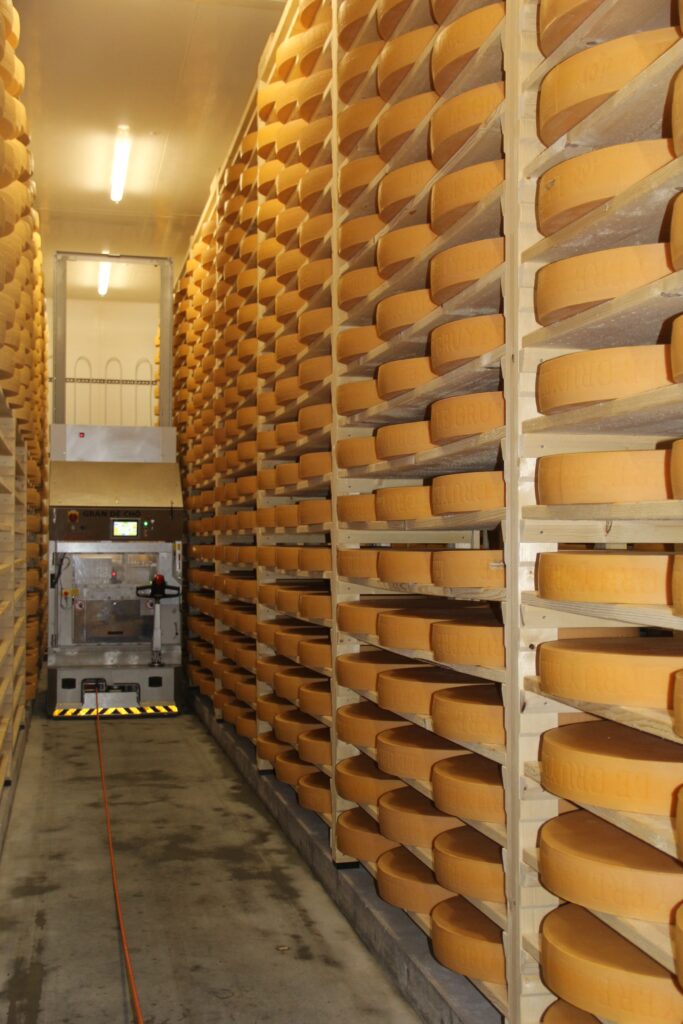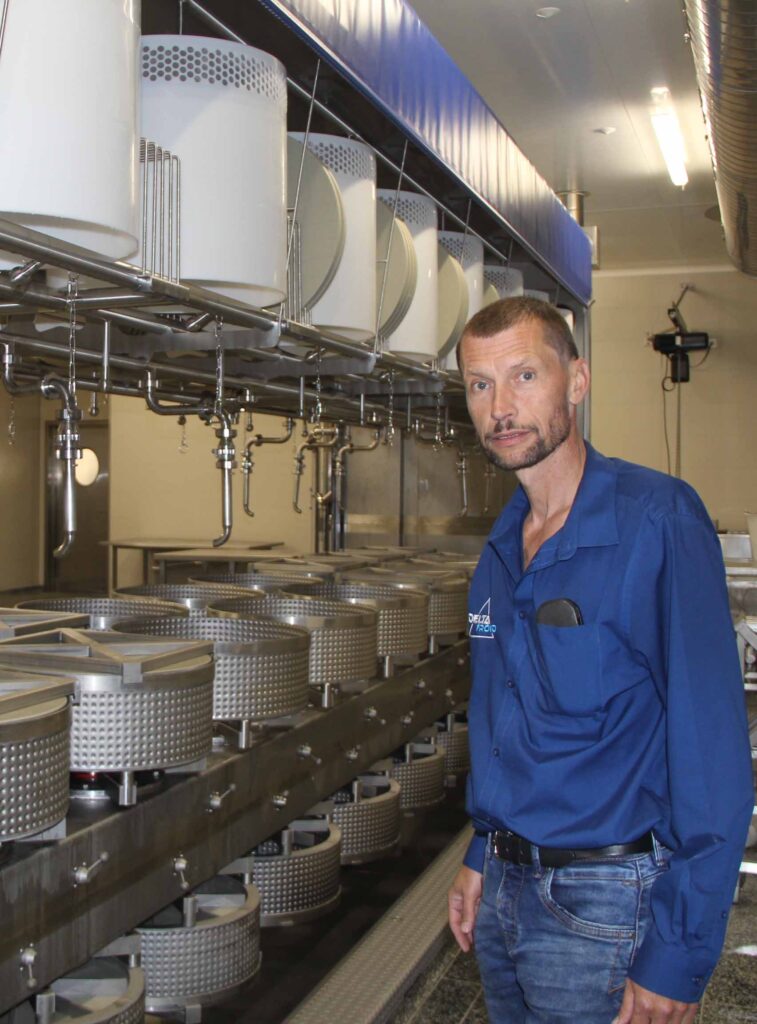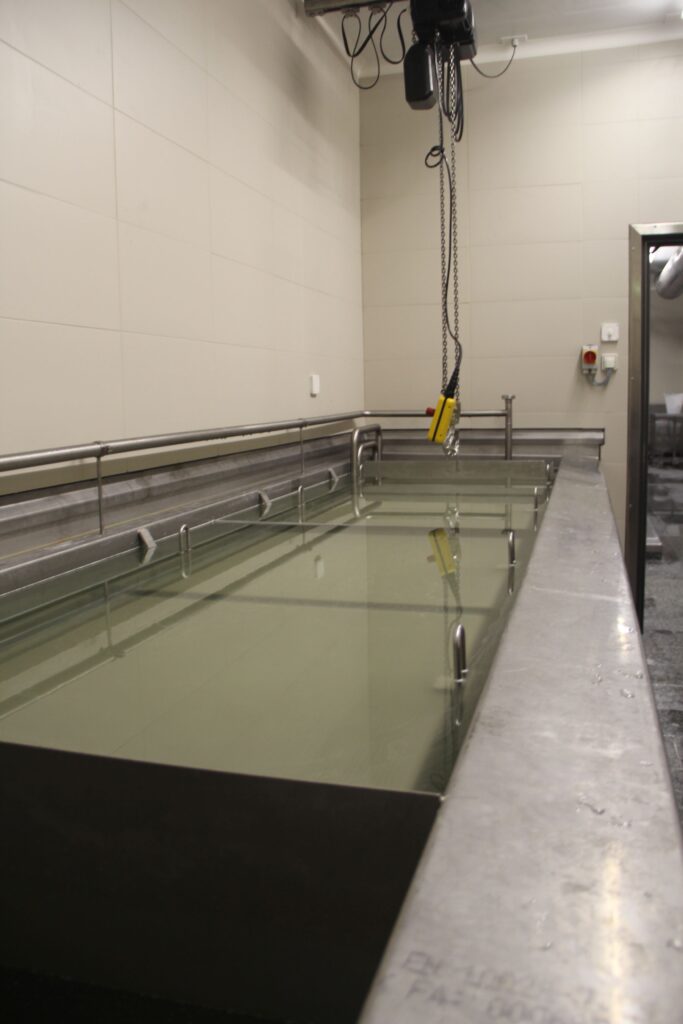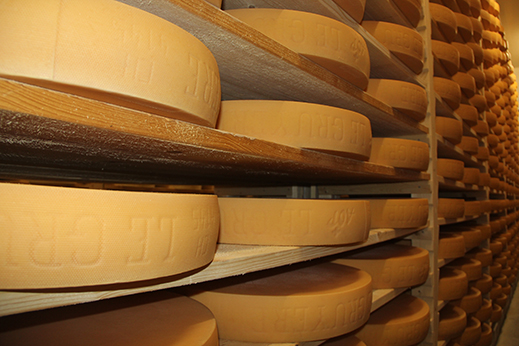In 2022, milk producers in Ponthaux, Corcelles-près-Payerne and Russy (villages in Switzerland), and their milk buyer David Wolhauser, launched a study for a project to build a new cheese dairy in Ponthaux, with the aim of bringing together the old, ageing cheese dairies onto a single new production site for Gruyère AOP and Vacherin Fribourgeois AOP.
For this ambitious project, they turned to David Birbaum, director of Deltafroid Sarl, a company specialising in refrigeration systems for dairies. Their collaboration dates back to 2003 and underpins a relationship of trust and shared expertise. The main objective was to design a new, high-performance and sustainable facility while optimising electricity consumption.
Refrigeration, an essential criterion in cheese production
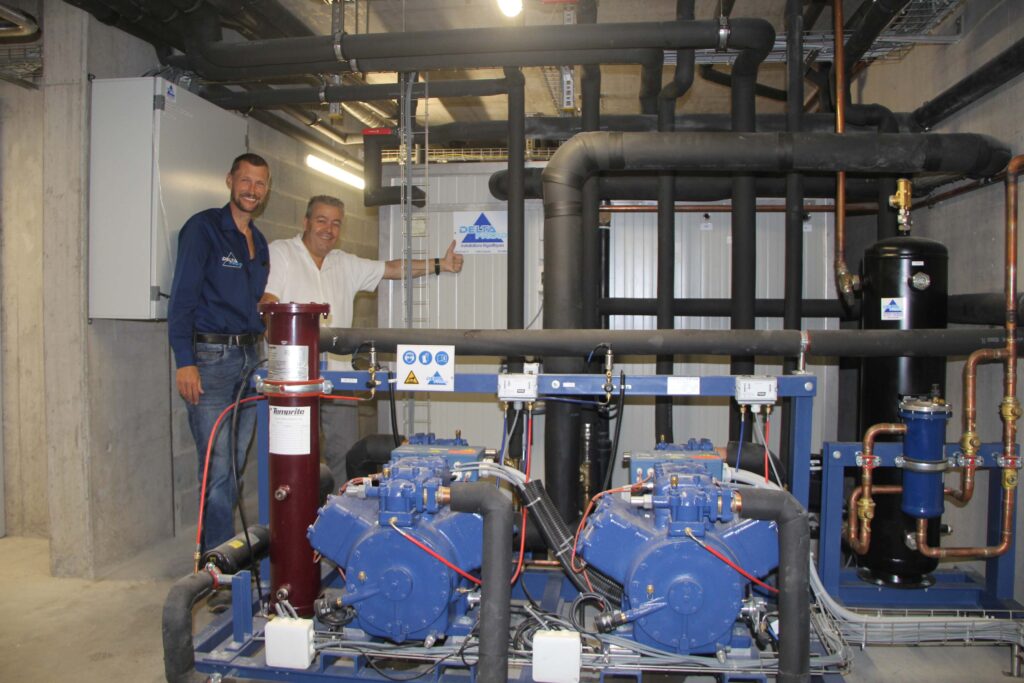
At each stage of the cheese production chain, refrigeration is required to cool the milk, store the lactic ferments, pasteurise, dehumidify the premises and maintain a controlled temperature in the maturing room for ripening. Deltafroid Sarl rose to the challenge by prioritising the energy aspect of the entire building and the growing needs associated with the automation of manufacturing equipment.
After an in-depth analysis, Deltafroid Sarl proposed the implementation of an indirect refrigeration system involving the installation of an ice water tank to supply all areas of the cheese factory and reduce the refrigeration power required for cold production.
The installer then considered the most appropriate refrigerant in anticipation of regulatory changes from ORRChim and to offer a sustainable solution to his customer. His equipment supplier Charles Hasler, put him in touch with John Padilla, Sales Manager at Climalife in Switzerland (French- and Italian-speaking), to help him make the right choice.
Solstice® N15, environmental and performance benefits
With a GWP of 288*, R-515B is a non-flammable (classified A1) azeotropic blend designed to replace R-134a. As John Padilla pointed out this refrigerant offers a sustainable alternative with a high coefficient of performance, reducing energy costs. This long-term solution ticked all the boxes in the specifications and was chosen for the new cheese factory.
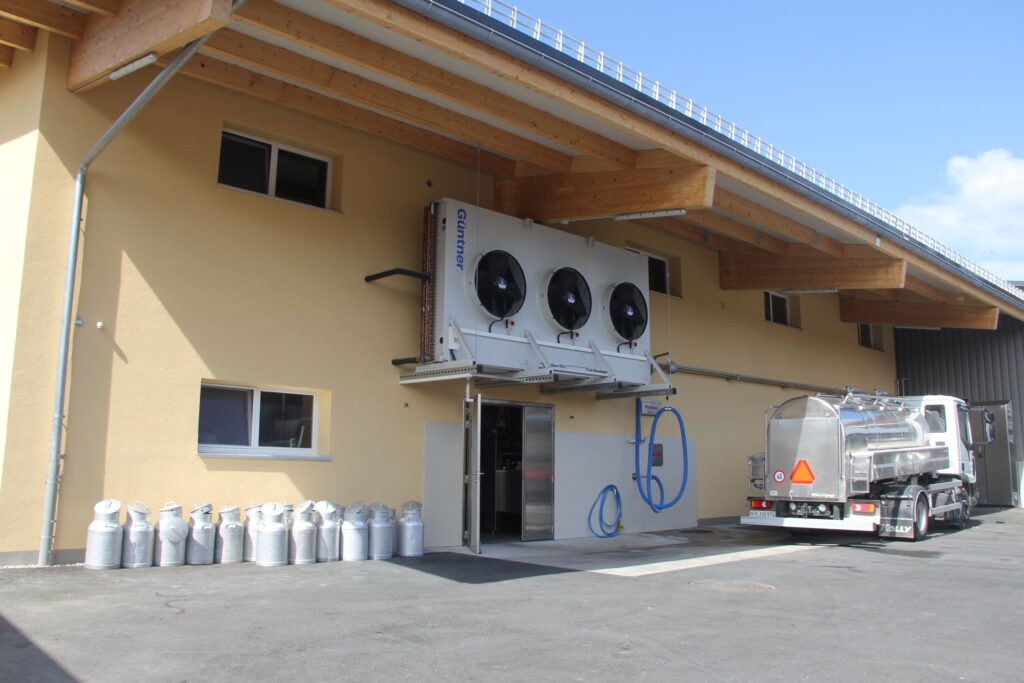
At the heart of the cooling system is an iced water tank cooled to 0°C by a refrigeration unit equipped with two Bock HGX66/2070-S compressors with a unit capacity of 31.2 kW and charged with 60 kg of R-515B. Thanks to the thermodynamic properties of this refrigerant, the installation is also equipped with a heat recovery unit to preheat water from a 1,000-litre tank to 45°C. This preheating obviously helps to reduce electricity consumption. The water is then heated to a temperature of 65°C to meet the cleaning requirements of the various equipment and building surfaces.
A Güntner condenser with a capacity of 100 kW is installed on the front of the cheese dairy.
Installation of a 0°C system for iced water
The iced water tank serves several areas that are essential to the cheese-making process. Two chillers have been installed in the tank, allowing a large quantity of ice to be stored, to maintain a controlled temperature in all areas, both day and night. This accumulation of ice constantly cools the warmer return water to a temperature close to 0°C.
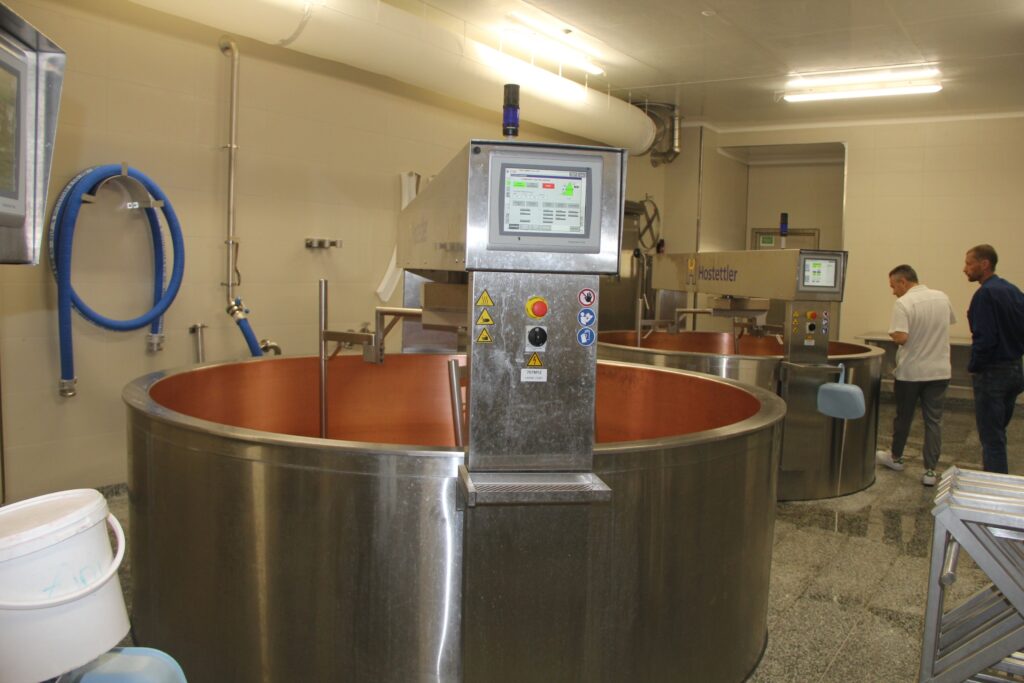
The milk is delivered twice a day by 10 local producers
in accordance with the specifi cations for Gruyère AOP.
Its production must comply with a strict procedure,
with each step being carried out to the letter. The milk
is cooled in the vat using exchangers through which
iced water circulates. The system can be adjusted via
a control panel, allowing the operator to choose which
equipment to supply.
Lactic ferments stored in a cold room at a temperature of 2°C are added for the maturation process, as well as rennet to curdle the milk. Once the curd has been cut, moulded and marked, the cheesemaker removes each wheel from the mould and immerses it in a salt bath at a controlled temperature of between 12 and 15°C. The cheeses are then stored in a maturing cellar for slow maturation in a humid environment at 90% humidity and a temperature of 15°C, maintained by a static system.
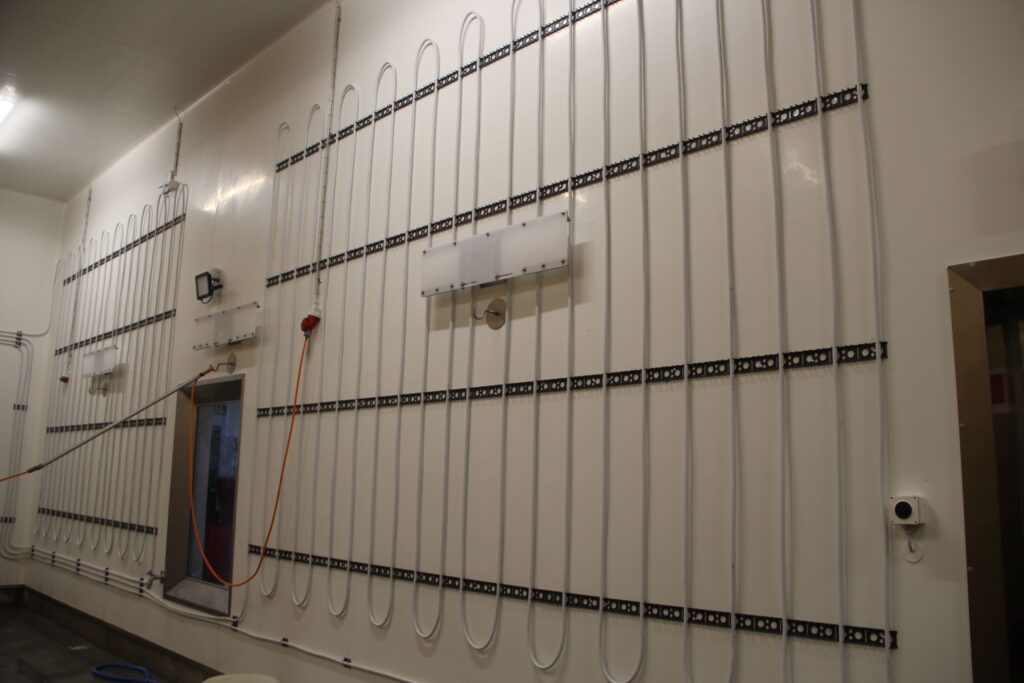
The iced water tank also feeds the cooling coil of the air
handling unit that controls the humidity in the production
room.
Since 3 June, the Ponthaux cheese dairy has been fully
operational and perfectly equipped to process the 3.6
million litres of milk collected each year, enabling the
production of 310 tonnes of Gruyère and three tonnes of
Vacherin. The shop, equipped with self-contained display cases that operate independently of the main system, was opened on 23 August.
This project perfectly illustrates how an innovative vision, combined with technical expertise, can meet the
challenges of cheese production while complying with strict quality and sustainability standards.
